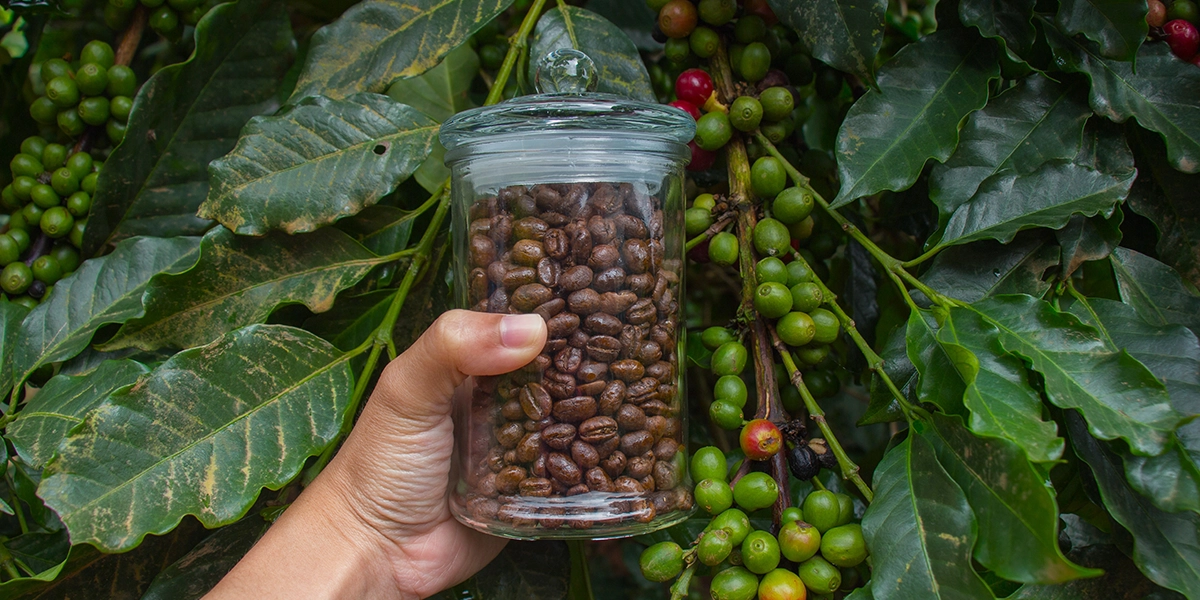With the global production of coffee forecasted to reach 10.284 billion kilograms by the end of this year, it is no wonder the cherished morning ritual of savoring a good old cup of joe is shared by millions of people worldwide.1 Yet, what lies waiting to be unearthed is the intricate role played by microbial communities during the coffee bean production process.
From cultivation to post-harvest processes, each step influences the final brew's quality. Different environmental conditions and processing methods, such as dry/natural, wet, or semi-dry, impact the fermentation duration and contribute to the development of a diverse flavor profile by leveraging region-specific microbial groups. During fermentation, microbes play a crucial role in breaking down the polysaccharide-rich mucilage layer of coffee cherries and release growth metabolites that enhance aromas, flavors, and bioactive compounds, a process that continues during drying to achieve the desired moisture level.

Technological advancements in metagenomic techniques have revolutionized our understanding of coffee’s fermentation process. This has led to the revelation of the vast diversity and intricate functional potential inherent in microbial communities, which intricately shape the crucial flavor compounds found in brewed coffee. Through their enzymatic activities, microbes not only enhance flavor but also delicately modulate acidity, contributing to the unique flavors and aromas experienced in the final brew. Nestled in the coffee haven of Thailand, where Robusta and Arabica thrive amidst diverse landscapes, a group of researchers embarked on a journey to unravel the microbial mysteries shaping the region's rich coffee tapestry.
To better understand the roles that microbial and fungal communities play on the aroma and flavor profiles of coffee beans, researchers collected coffee slurries and cherries into DNA/RNA Shield to assess microbiome profiles throughout the fermentation and drying processes. DNA was extracted using the ZymoBIOMICS 96 MagBead DNA Kit with subsequent generation of bacterial and fungal libraries targeting the bacterial 16S ribosomal RNA gene and the fungal ITS2 region. Flavor and aroma compounds were analyzed throughout the fermentation and drying process by Headspace Stir Bar Sorptive Extraction (HSSE) and Gas Chromatograph-Mass Spectrometer Triple Quadrupole (GCTQ).
The Secret Lies Beyond the Beans
The comprehensive analysis revealed rich diversity comprising 64 genera of bacteria and 59 genera of yeast/fungi. Groups of yeast and lactic acid bacteria (LAB) which predominated in the process correlated with preferable aroma and flavor compounds. For example, notes of woody and soapy aromas positively correlated with several yeast/fungi species like Rhodotorula mucilaginosa, Alternaria sesame, Debaryomyces prosopidis, and Kwoniella bestiolae. Other combinations of bacteria or yeast/fungi species positively correlated with citrus, lavender, and floral aromas as well as flavors of cool mint and caramel.

Understanding the relationships between superior flavor and aroma profiles and their correlations with distinct groups of microbes holds the potential to empower coffee farmers in growing premium coffee beans. By incorporating carefully chosen starter cultures selected for their desirable attributes, this approach opens doors to an elevated level of coffee bean customization that paves the way for a truly personalized coffee experience. Not bad for some mighty microbes!
Request Your Free Sample Today!
Citations
- Coffee: World Markets and Trade. USDA Foreign Agricultural Service. (2023, December 20). https://fas.usda.gov/data/coffee-world-markets-and-trade
- Pazmiño-Arteaga, J., Gallardo, C., González-Rodríguez, T. et al. Loss of Sensory Cup Quality: Physiological and Chemical Changes during Green Coffee Storage. Plant Foods Hum Nutr 77, 1–11 (2022). https://doi.org/10.1007/s11130-022-00953-8
- Tatsaporn Todhanakasem, Ngo Tai, Soisuda Pornpukdeewattana et al. The Relationship Between Microbial Communities in Coffee Fermentation and Sense and Metabolite Profiles of Finished Products, 18 January 2024, PREPRINT (Version 1) available at Research Square [https://doi.org/10.21203/rs.3.rs-3848032/v1]
